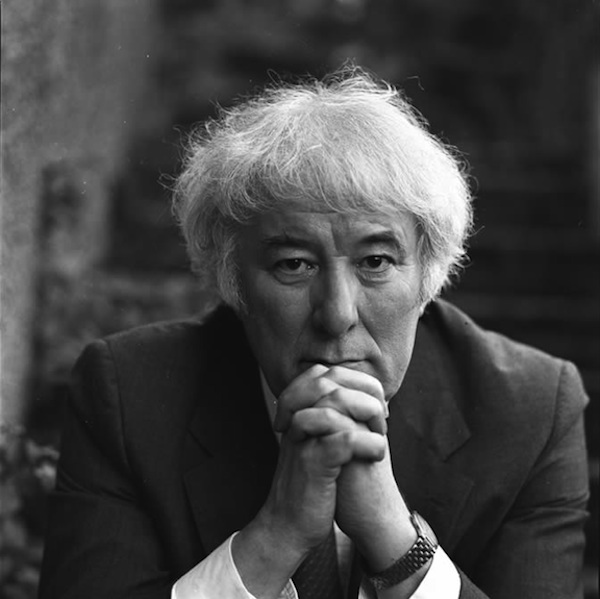Books |
Seamus Heaney
By
Published: Oct 25, 2020
Category:
Poetry
Seamus Heaney had the Irish gift — the gift of bullshit — but he didn’t use words for self-glorification. He was that rare event: a great writer, a great man. He taught. He mentored. He praised. He parented. And still did the internal work that led to a book of selected poems that topped 400 pages. “Seamus never had a sour moment, neither in person nor on paper,” said the playwright Tom Stoppard. “You couldn’t help loving him any more than you could help reading on from the first line.” As someone said, he saw the Nobel Prize as encouragement to do better — among friends, he spoke of it as “the N-word.”
The life, in brief: Born in Northern Ireland, in 1939, the eldest of nine children. A younger brother, age four, was killed by a car. His poem about the death ends: “Wearing a poppy bruise on the left temple/ He lay in the four foot box as in a cot./ No gaudy scars, the bumper knocked him clear./ A four foot box, a foot for every year.” He won a scholarship to a school that nourished him, earned a college degree in English, taught, married, wrote. In college, he said of his writing, “I was just kicking the ball around the penalty area, not trying to shoot at the goal. Then in 1962 the current began to flow.” [To buy the paperback of “Opened Ground: Selected Poems, 1966-1996” from Amazon, click here. For the Kindle edition, click here.]
The Heaney poems you may have seen quoted mostly describe a world as foreign to us as the moon, a rural world of lorries, peat, wells, animals and the heavy tread of the Church. As he describes it in his Nobel Prize speech:
…in rural Co. Derry, we crowded together in the three rooms of a traditional thatched farmstead and lived a kind of den-life which was more or less emotionally and intellectually proofed against the outside world. It was an intimate, physical, creaturely existence in which the night sounds of the horse in the stable beyond one bedroom wall mingled with the sounds of adult conversation from the kitchen beyond the other. We took in everything that was going on…
But don’t make the mistake of thinking Heaney is as accessible as Robert Frost. Many poems, especially the later ones, read like stories or letters, but for the earlier ones, it would help if you have a command of myth and poetry. The through line: language. His delight in being at college is “exhilarated self-regard.” About writing: “Cultivate a work-lust/ that imagines its haven like your hands at night/ dreaming the sun in the sunspot of a breast.” A poem, he write, is “a ploughshare that turns time/ Up and over” — like cutting peat. Because there’s always a connection between where he’s from and where he is now. As in “Digging,” one of his most frequently quoted poems:
Between my finger and my thumb
The squat pen rests; snug as a gun.
Under my window, a clean rasping sound
When the spade sinks into gravelly ground
My father, digging. I look down
Till his straining rump among the flowerbeds
Bends low, comes up twenty years away
Stooping in rhythm through potato drills
Where he was digging.
The coarse boot nestled on the lug, the shaft
Against the inside knee was levered firmly.
He rooted out tall tops, buried the bright edge deep
To scatter new potatoes that we picked,
Loving their cool hardness in our hands.
By God, the old man could handle a spade.&
Just like his old man.
My grandfather cut more turf in a day
Than any other man on Toner’s bog.
Once I carried him milk in a bottle
Corked sloppily with paper. He straightened up
To drink it, then fell to right away
Nicking and slicing neatly, heaving sods
Over his shoulder, going down and down
For the good turf. Digging.
The cold smell of potato mould, the squelch and slap
Of soggy peat, the curt cuts of an edge
Through living roots awaken in my head.
But I’ve no spade to follow men like them.
Between my finger and my thumb
The squat pen rests.
I’ll dig with it.
“If you have the words,” he said, “there’s always a chance that you’ll find the way.”
BONUS VIDEO


